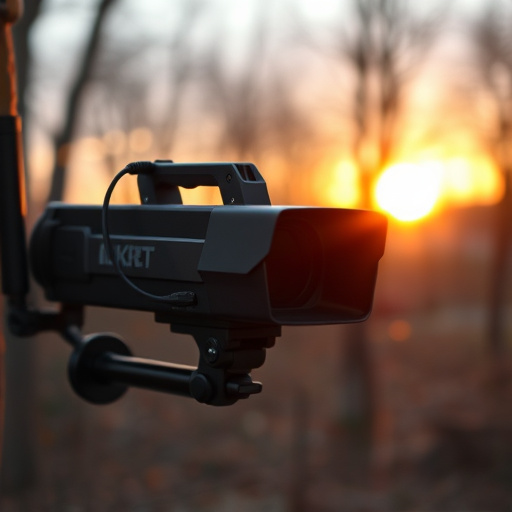Deploying hidden nanny cams with night vision in rental properties navigates a complex legal landscape, balancing security needs against tenant privacy rights. Landlords must obtain explicit consent or clearly mark surveillance devices to comply with regulations and maintain trust. Tenants should inspect their spaces regularly and use technology to detect these cameras, which can pose significant privacy risks if unauthorized. Prioritizing open communication and trust-building measures is a more ethical alternative to secretive surveillance.
In today’s digital age, privacy concerns are at an all-time high. One subtle yet pervasive threat is hidden surveillance in rental properties, particularly hidden nanny cams with night vision. While some devices aim to provide peace of mind, others invade personal spaces. This article delves into the legal boundaries and ethical considerations surrounding secret surveillance, exploring common placement spots in rentals and offering tenants tips on detection and prevention. Understanding these issues is crucial for safeguarding your privacy.
- Understanding Legal Boundaries and Privacy Rights
- Types of Hidden Surveillance Devices: Nanny Cams with Night Vision
- Common Placement Spots for Secret Cameras in Rentals
- Potential Risks and Ethical Considerations
- Detecting and Preventing Hidden Surveillance: Tips for Tenants
Understanding Legal Boundaries and Privacy Rights
In many jurisdictions, placing hidden nanny cams or any form of secret surveillance in rental properties is a delicate matter, governed by strict legal boundaries and privacy rights. It’s crucial for both landlords and tenants to understand these regulations to ensure compliance and maintain a safe environment. The use of night vision technology for hidden cameras is often subject to specific laws, with varying restrictions on their installation, purpose, and data storage.
Tenants have the right to expect privacy in their homes, while landlords must balance this against legitimate safety and security concerns. Legal permissions typically require explicit consent from tenants or clear notification of camera presence, especially in common areas or where privacy is expected. Understanding these legal nuances is vital for avoiding potential legal repercussions and fostering trust between tenants and landlords.
Types of Hidden Surveillance Devices: Nanny Cams with Night Vision
Hidden nanny cams equipped with night vision capabilities are a growing trend in home surveillance, often used by concerned parents or landlords seeking peace of mind. These sophisticated devices can be discreetly installed in various locations around a rental property, offering round-the-clock monitoring. The technology typically involves small, unassuming cameras with infrared lights, allowing for clear images even in complete darkness.
What makes these cams particularly effective is their ability to capture footage without being detected. They are often designed to blend into everyday objects like light switches, power outlets, or even fake smoke detectors. This stealthy approach ensures that activities within the property remain unawareness while providing valuable insights through live or recorded video feeds.
Common Placement Spots for Secret Cameras in Rentals
In rental properties, secret surveillance spots often go unnoticed by tenants, with common areas like bedrooms and bathrooms being prime locations for hidden cameras. Landlords or previous occupants may install hidden nanny cams equipped with night vision capabilities to monitor activities while ensuring privacy. These devices can be concealed in various objects such as electrical sockets, light switches, or even seemingly innocuous decorative items like picture frames.
Another frequent spot for secret surveillance is the common area of the property, especially entryways and hallways. Night vision technology allows cameras to capture footage even in low-light conditions, making it easier to identify individuals. It’s crucial for tenants to be vigilant and regularly inspect their living spaces, looking for any signs of these hidden devices to safeguard their privacy.
Potential Risks and Ethical Considerations
While the use of hidden cameras, such as nanny cams with night vision, can offer peace of mind to property owners and landlords, it’s crucial to consider potential risks and ethical implications. These tiny devices, often disguised as everyday objects, have the power to invade privacy significantly. Tenants may feel constantly watched, leading to a sense of unease and mistrust. Moreover, unauthorized placement of hidden cameras in rental properties is illegal in many jurisdictions, with strict penalties for violators.
In terms of ethics, the use of spy equipment raises questions about consent and the right to privacy. Landlords should instead focus on open communication, establishing clear rules, and promoting trust rather than resorting to secretive surveillance. Tenants who feel respected and valued are more likely to take care of rental properties, fostering a positive relationship between landlord and tenant.
Detecting and Preventing Hidden Surveillance: Tips for Tenants
Detecting and preventing hidden surveillance, like hidden nanny cams or night vision devices, is a key consideration for tenants to ensure their privacy. Tenants should conduct regular visual inspections of their rental property, paying close attention to common hiding spots such as corners, behind furniture, or inside electrical outlets. Any unusual devices should be immediately reported to the landlord or property manager.
Using technology can also aid in detection. There are apps and tools designed to identify hidden cameras, which can help tenants stay one step ahead. Additionally, keeping curtains closed at night and ensuring all windows and doors are securely locked can make it more difficult for covert surveillance equipment to be set up without notice. Regularly changing passwords and using strong, unique combinations for all devices and accounts is another effective measure to prevent unauthorized access and potential hidden camera placement.
While understanding the potential risks associated with hidden surveillance devices, such as nanny cams with night vision, it’s equally important for tenants to be aware of their rights and take proactive steps to safeguard their privacy. Regularly inspecting rental properties and being vigilant about unusual fixtures or devices can significantly reduce the chances of becoming a victim. By staying informed about legal boundaries and employing detection techniques, individuals can protect their personal spaces from invasive surveillance, ensuring a safer and more secure environment.
